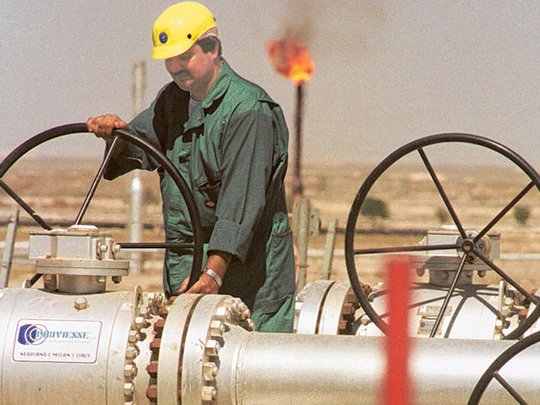
Economists are condemned to devise scenarios and produce forecasts upon which strategists and policymakers form judgements for action.
Mostly they don’t deny that they are invariably wrong. That is just one aspect of what is known as the dismal science, whose ability to identify the truth about how economies work often seems, as the financial crisis demonstrated, dismally off the mark, and — in these days of behavioural analysis and an increasingly complicated world — more an artistic discourse than any kind of laboratory exercise.
In the case of the GCC countries, economic structures are sufficiently skewed still to oil & gas, even substantially in their diversified aspects because of the feedstock element, that forecasting might be expected to be easier than for other regions. But the calibre of what emerges from an economic model still depends on what’s been put in, and the implied simplification only means that there is heavier dependence on fewer variables.
The scenarios assumed belong critically to the imagination, rooted in qualitative interpretation, even if supported by the weight of historical experience as to trends and events.
In some sense, that’s how it should be, because, while history does have its lessons, a tendency simply to extrapolate from the past is not a reliable way to consider the future, particularly in this very uncertain age fraught with systemic, interactive global risk. Realistic thought processes and validating research would seem vital.
Opposing scenarios
In the past two weeks two opposing scenarios have slipped into the discussion about the Gulf in this space, which happen to be implicitly in conflict.
First was the suggestion that the persistence of extremely low interest rates, by connection with US Federal Reserve policy, would be excessively reflationary for the GCC bloc, positioned as it is precisely on the other side of the debtor-creditor balance (at least until the US completes its energy revolution through shale development).
Second was the notion that the lingering sluggishness of the global economy — hampered by structural imbalances, political and policy ineffectiveness and social restraints — would impose a drag on oil prices and therefore a dampener on earnings. A paper authored for the IMF when meeting Gulf authorities last month considered that view.
Political transitions in both the US and China this week may or may not have impacts on that prospect. Last week’s oil comment from KBC Technology pointed to the markets’ need for some resolution and clarity arising from these watershed moments.
“The stagnant period leading up to these changes we hope is close to over,” it said. “Both nations will require significant changes in their political policies to prevent a period of economic or social decline. In the US the fiscal debt will need to be addressed, whilst in China the need for major economic restructuring will be critical to ensure ongoing social cohesion.”
The two contrasting propositions for the Gulf economy can nevertheless be accommodated once a range of scenarios is deliberately brought together.
Global crisis
Typically, an economist will create a central case, an alternative case and a worst case, especially if confronted with a credit committee at a bank, which may have to be persuaded of the viability of a business project. Those three possibilities might, for instance, be contrived according to ratios of 60, 35 and 5 per cent, giving reasonable grounds for an exchange of ideas and assessment.
As an aside, it is a very regrettable dimension of the past five or ten years that in financial circles the 5 per cent scenario turned out to be a real threat in many cases, rather than close to zero. The global crisis seemed to show not that there was only a one-in-twenty probability of an calamitous event but that when dealing out the same cards year by year, within twenty years something very bad indeed is going to come up, and the resulting house of cards will tumble.
Whereas the dollar peg and its attendant issues were given quite an airing here recently, the oil outlook might be mentioned again, as aired by the IMF’s recent staff paper.
While options prices indicated that the markets are concerned in the short term about geopolitical risks, the medium- and long-term issues of Eurozone crisis and advances in energy production in the rest of the world could have a depressive effect on hydrocarbon prices.
So where might the balance lie between those possible paths; which would belong to the central scenario and which the alternative? And what indeed might be the worst case?
Well, that’s for practising economists, conveying their notions confidentially to public bodies, or pummelling the numbers in a hot seat for private institutions, which might choose to share them for marketing reasons. They will still get it wrong, by some degree, as a statistical norm and occupational hazard. Mere writers, meanwhile, aren’t rewarded to take the flak for those kinds of mistakes.












